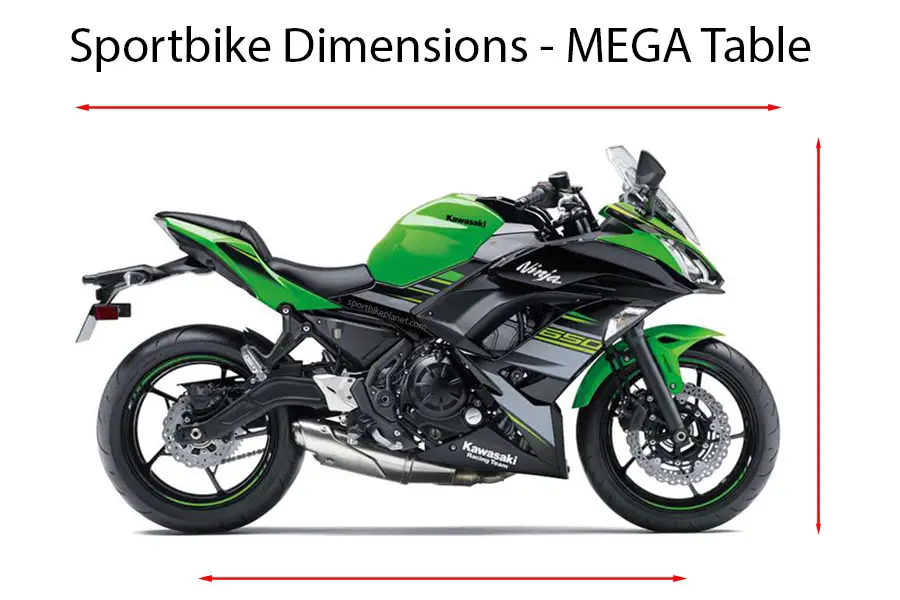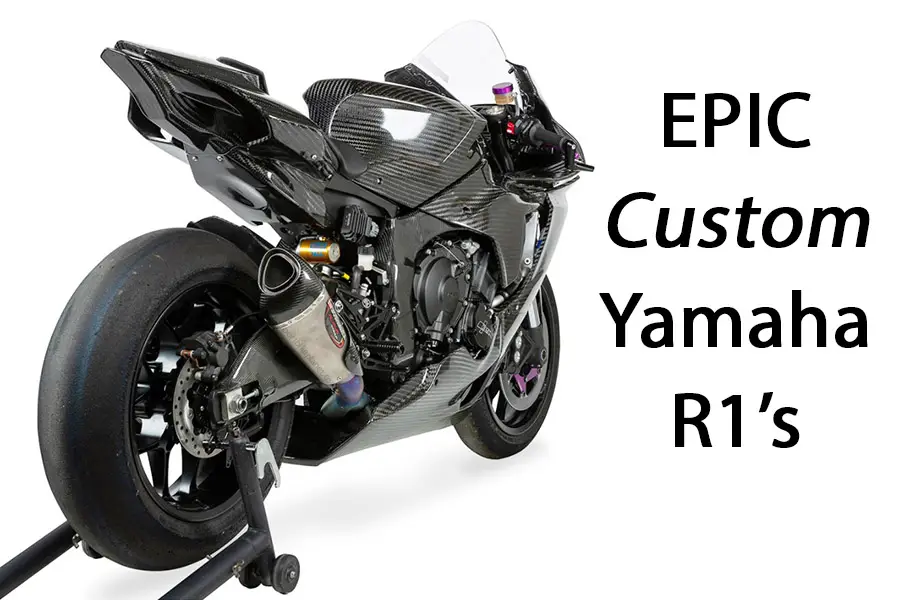The pursuit of performance leads to innovation, and technology trickles down from the elite to the common.
And this is evident with the advent of quick shifters finding their way onto various road-going high performance sportbikes, but, what exactly is a motorcycle quick shifter?
A motorcycle quick shifter is an engine part that automates upshifting gears by removing the need for using the clutch lever entirely and making the gear change almost instant. The rider simply needs to click the gear shifter up and the quick shifter hardware on the motorcycle will handle the rest, changing up a gear much faster than the rider could do it if traditionally using the clutch.
Quick shifters address an issue once handled by a rider’s skill and coordination.
And while traditionalists might not see the point, other riders look to expand their limits and extend the horizon of what’s possible on a motorcycle.
Can A Motorcycle Quick Shifter Improve Riding Performance
Renowned motorcycle roadracing instructor Keith Code taught a theory that has always stuck with me, and presumably with many others.
As Keith explained it, a rider has a finite amount of focus. He likened it to having a dollar to spend, and would ask you to consider how you would allocate those hundred pennies out on the track.
For instance, more experienced riders can go more quickly and safely because they have completely internalized and made automatic the basic inputs required by the motorcycle by its pilot.
After many hours and years of riding, braking, accelerating, and corner entry become second nature.
That also applies to shifting gears.
Very few riders past the mini-bike stage need to actively think “okay, first I pull the clutch in… then I shift up by pulling up on the left side lever… then I let the clutch back out while feeding power with the throttle that is the spinny tube bit on the right handlebar…”
No, of course not. We just do it. It becomes automatic.
When driving a car on the street, we react instinctually when a stoplight goes from green to red.
Repetition builds familiarity, and confidence.
What Keith was on about was internalizing more advanced techniques, such as trail-braking into a corner – essentially holding the front brake a bit longer into a corner entry before going immediately to the throttle at the apex.
This is just an example. Keith’s premise was that every penny not squandered by thinking about technique could instead be better spent on strategy, line selection, and anticipating what other racers might do on the track.
In short, a motorcycle quick shifter will not only improve acceleration due to highly accelerated gear changes, it will also free up concentration so that you can focus more on ride-craft and keeping safe.
Do I Need A Motorcycle Quick Shifter
As motorcyclists, we learn to seamlessly roll off the throttle while pulling in the clutch, snicking the gearshift lever to raise or lower the transmission ratio, then matching engine speed for the next gear with the throttle as the clutch is released.
However, like most things, even the best riders cannot equal the reaction time of a device designed to facilitate faster. Thus, quick shifter mechanisms have become equipment de rigueur at the racetrack, an absolute necessity to competitive lap times.

Motorcycles equipped with the quick shifter technology simply accelerate harder and faster as gear changes are achieved in milliseconds, and a track racer might be at an insurmountable disadvantage if shifting manually.
And now we are seeing quick shifters come as stock equipment on a variety of street legal sport and naked bikes ranging from exotica like Ducati’s Panigale and BMW’s S1000RR all the way down to far more affordable bikes like Honda’s CB650R.

Do we, as street riders, need this level of technology? Of course not. But quick shifters are fun to operate (well, not operate, really) and it sure sounds cool at full throttle.
How Does A Motorcycle Quick Shifter Work
Motorcycles use a constant mesh transmission. This means all the gear clusters are in rotation at all times, with an internal mechanism consisting of shift forks and a gear selector drum that allows the rider to choose between ratios.
Some motorcyclists will shift without employing the clutch, but very few are happy about it and the vast majority require rolling off the throttle for a gear change to occur.
This is because under acceleration – or deceleration for that matter – the selected gear-sets are under a heavy load from the engine.
The clutch simply removes the connection between an engine’s crankshaft rotation and transmission to allow gear changes to happen.

Quick shifters instead remove spark from the engine. A sensor located on the shift linkage detects movement, and transmits a signal to the machine’s ignition to shut down the coils for less than a split second – which is just long enough to remove force from loaded transmission shafts and allow the next set of cogs to be selected.
Back to how we spend a dollar of concentration; a quick shifter requires only one independent action – nudging the shift lever – instead of at least two independent actions and more often three that must be precisely timed to facilitate maximum acceleration.
A rider can spend his attention on the road instead of the motions required with a manual shift.
The Best Motorcycle Quick Shifter Brands
As stated at the onset of this article, the trickle down of technology from the racetrack to the street is constant.
Floating radial brake calipers, wider yet lighter wheels, and inverted forks are just a few obvious examples of racetrack innovation that have become commonplace on a motorcycle dealership show floors.
Quick shifters are likely to follow suit in becoming nearly standard, but as of now only about a dozen new motorcycles are sold with quick shifters as stock equipment.
There are, however, a handful of companies selling kits that can be installed on nearly any motorcycle. Let’s take a look at a few of the main players.
Dynojet
Back in the days when we all walked uphill through the snow, both ways, between school and home Dynojet made its mark in the industry with – as the name implies – carburetor jet kits.
Then, we would increase horsepower by a significant percentage through utilizing an aftermarket exhaust paired with a freer flowing intake system, and then rejet the carbs to allow more fuel flow to match the increased air supply.
As fuel injection came to the fore, Dynojet shifted gears – pun intended – by introducing the wildly well-received Power Commander which allowed essentially the same thing, adjusting the fuel to air mixture of newer fuel injected machines.
Stock fuel injection systems followed the lead of carburetors, which had long since begun to be delivered by the manufacturers in a fairly lean setting as they collectively fought to maintain performance under increasingly stringent environmental regulations.
Almost any stock motorcycle benefits from freeing up the fuel intake system to allow for more gas and air to flow.
This would later put the company in an excellent position to compliment the Power Commander with the addition of a Dynojet Quickshifter, as it simply plugs into an existing port on the Commander unit.
A sensor is fitted to the shifting linkage, and programming within the Power Commander cuts the spark to the motor as the shifter is moved. The dead spark interval is easily adjustable to match the specific requirements of your gearbox.
This is possibly the most tried and true system on the market, but it does require the Power Commander module to work. Dynojet Power Commanders are sold for about $300 to $550 for most motorcycles depending on application, with the Quickshifters generally adding anywhere from $200 to $400 to your tab.
They are available from any number of aftermarket suppliers, so you’ll want to shop around carefully if you care about saving a bit of cash.
Bazzaz
Based in America, Bazzaz produces a variety of electronics similar to DynoJet with fuel controllers similar to a Power Commander, traction control systems, and also ignition plug in modules that eliminate the electronic speed governors some motorcycles are delivered with.
This company likely has the largest presence in the MotoAmerica roadracing series, with many teams from premier to privateer using the Bazzaz programmers.
Currently the company offers two product lines that are applicable to many motorcycles. The QS4 USB is a stand-alone system that plugs into your wire harness to allow for full throttle clutchless shifting. It comes with the electronic control unit, the harness that adapts it to your stock machine, and of course the sensors and rods.

The QS4 USB module bears a fairly affordable suggested retail price of $490, but can be found for considerably less with a bit of interweb shopping.
A substantial upgrade that most street riders will never need is popular in the paddock, the Z Fi TC unit which includes the quick shift capability but also provides tunable traction control.
The system, which eschews wheel data speed sensors in favor of detecting engine RPM, is capable of not only cutting the ignition momentarily for shifting purposes but also making quick cuts for mere milliseconds at a time to limit power to the real wheel in order to maintain traction should it sense an all-too rapid rise in engine speed due to the rear tire breaking traction and spinning up.

HM Quickshifter
Arguably a still more premium product line is available from the United Kingdom based HM Quickshifter company that – as the company name implies – specializes almost exclusively in quick shifting units.
Their products are used extensively in the MotoGP paddock, and it’s rumored that nine out of every ten bikes on the Moto2 grid are equipped with HM systems. They are also a staple for racers and teams competing in World Superbike and British Superbike racing.
HM utilizes a unique “strain-gauge” sensor that actually measures the molecular change in the shift rod when force is applied! I’d have to find a metallurgist to better explain that to me before I could explain it to you, but the popularity of the equipment across the gamut of European roadracing certainly supports the success of that approach.
Happily, you apparently don’t have to be a scientist or a super-tuner that understands these things, the modules are designed to be plug and play with no moving parts and no tuning needed. Kill time and sensitivity are said to be easily adjusted, and technical support is included with purchase.

With some variance, the units seem to be quite affordable as well, averaging just £375 – which works out to about 520 bucks in U.S. dollars at the current exchange rate.
Summing up
Sure, I’m a bit of a traditionalist, and having spent many years honing my skills at riding motorcycles I could shake my fist at a cloud and bemoan the days when being accomplished at quick shifting with a clutch could make the difference between winning and losing a race, rather it be officially sanctioned or impromptu on the backstreets.
But in truth, I have to lean towards the performance advantage. And like any old racer I’ll take any edge I can get. A quick shifter eliminates much of the time a simple gear shift takes, lessens hand fatigue, and actually makes any motorcycle easier to ride.
Plus, maybe I mentioned this before, a sportbike with a quick shifter at song banging through the gears nearly instantly is an aural feast – it sounds really cool!
That alone might be worth the price of admission.


